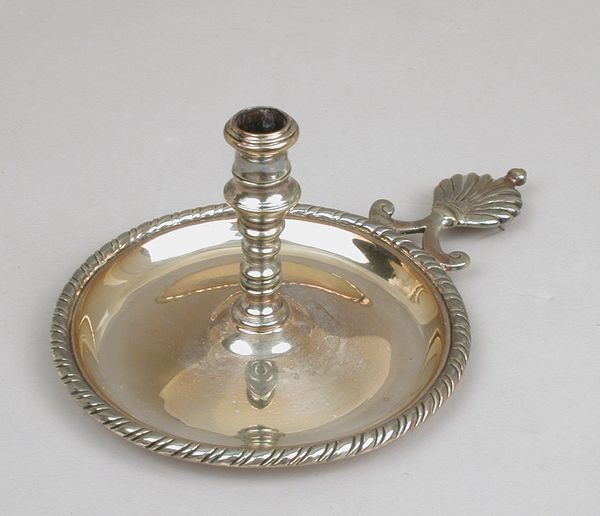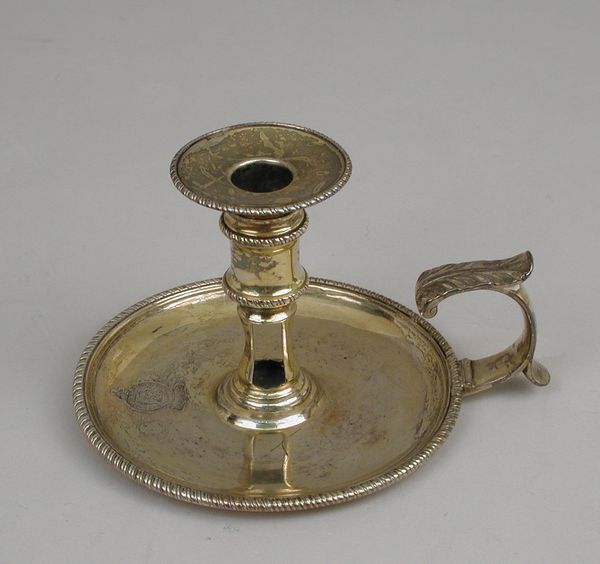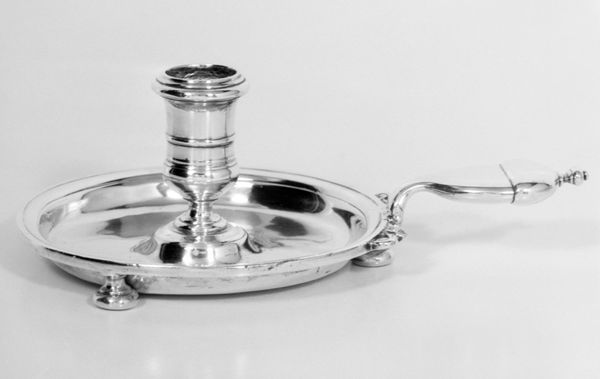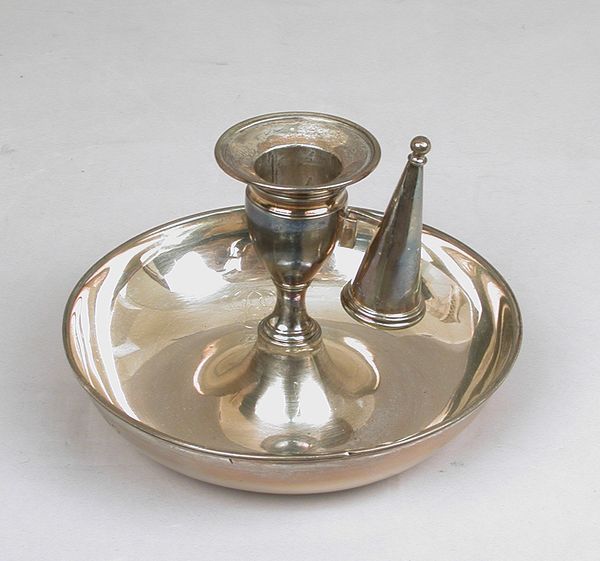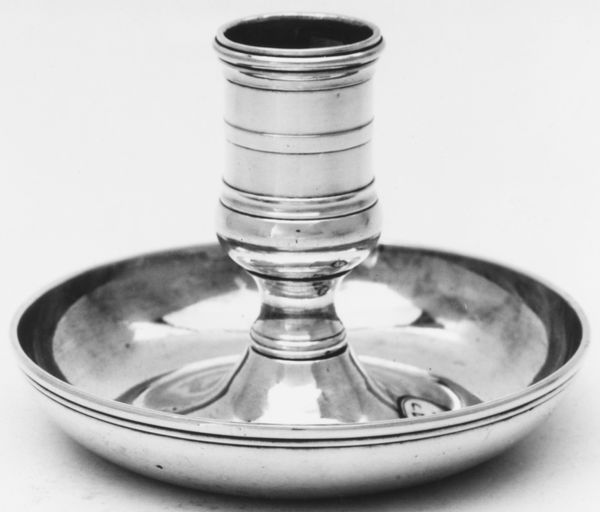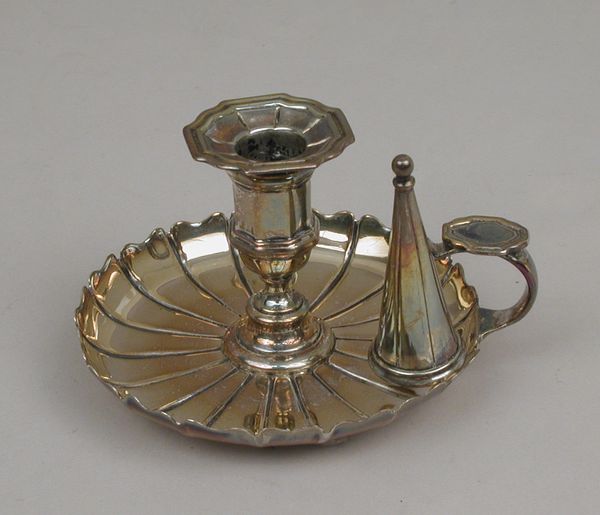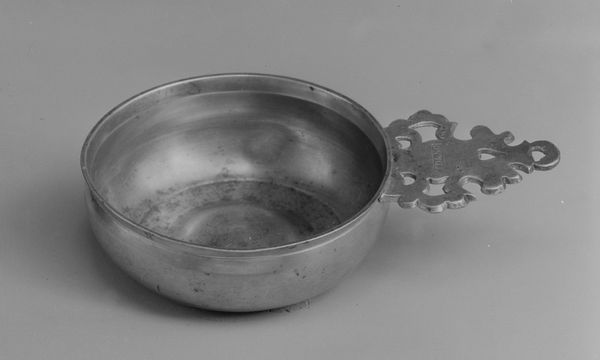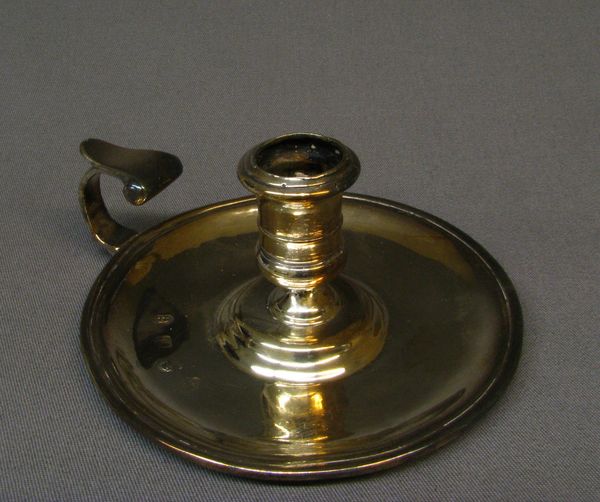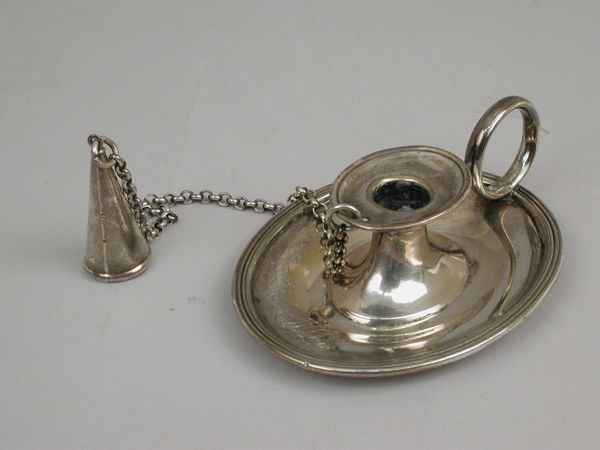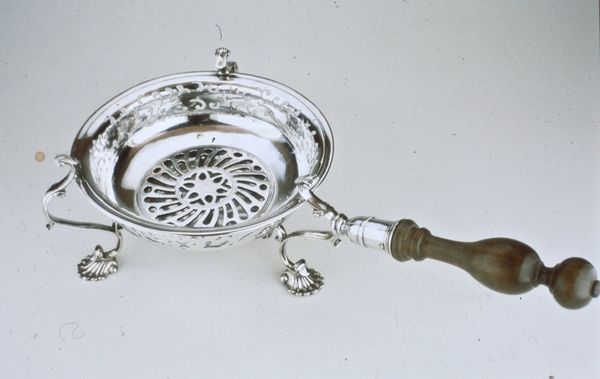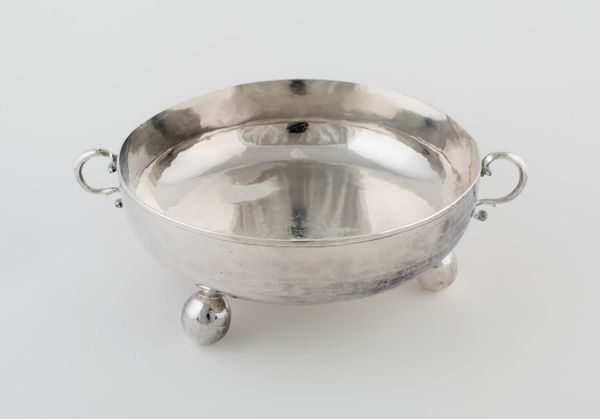
silver, metal, sculpture
#
silver
#
baroque
#
metal
#
sculpture
#
sculpture
#
decorative-art
Dimensions: Overall: 2 1/4 × 5 1/2 in. (5.7 × 14 cm)
Copyright: Public Domain
Curator: Allow me to introduce a fascinating example of Baroque decorative art: a silver chamber candlestick, crafted between 1715 and 1716, and currently residing at the Metropolitan Museum of Art. Editor: There’s a stark utilitarian beauty here. The eye travels over that gleaming expanse of slightly scuffed silver—it looks as if it truly was held by a hand in a darkened room. Curator: Absolutely. The design is striking for its relative simplicity. The composition draws the eye, indeed, to the interplay of geometric forms; the disc-shaped base, the cylindrical holder, and that elegantly curved handle, each existing in a carefully considered spatial relationship. Editor: That handle especially suggests a specific kind of labor, doesn’t it? One hand holding, another lighting. Who crafted the piece, and for what class of consumer was it made? A piece like this, reflecting the flicker of candlelight, underscores a real person. Curator: It's believed to be from the workshop of Thomas Folkingham, a silversmith of considerable reputation. The craftsmanship suggests it was made for someone of means. Observe the delicate chasing on the handle; that is hardly a detail one finds on everyday items. Editor: True, but the wear marks suggest constant use and physical labor as well, hinting at a broader economic framework of production, of mining and metallurgy in the service of creating not only wealth but intimate moments and even moods, doesn't it? Silver reflects its environment—literally, and culturally. Curator: And what reflections we can find if we analyze the candlestick on a structural level. The Baroque favors dynamic symmetry. Note how it achieves equilibrium not through perfect balance, but through a sophisticated play of forms pulling against each other. The interplay of light across its surfaces also contributes to this dynamism. Editor: A great example of function dictating the artistic form, where silver serves as both the structure and also a lens through which we glimpse both artistry and societal context, highlighting class and labor of manufacture and service. Curator: I’d have to agree, reflecting on both perspectives makes for a richer interpretation of form and materiality. Editor: Exactly, considering materiality expands formal concerns—lighting a very illuminating intersection!
Comments
No comments
Be the first to comment and join the conversation on the ultimate creative platform.
